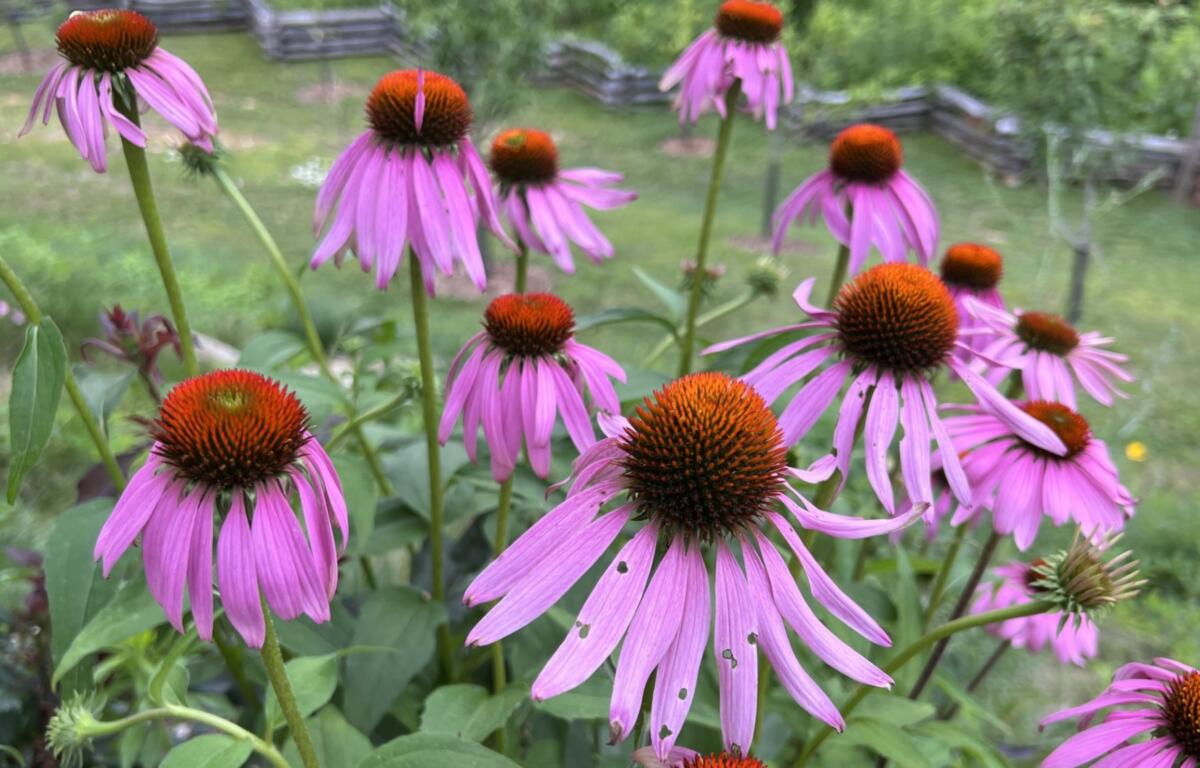ASHEVILLE, N.C. (828newsNOW) — Western North Carolina’s rich biodiversity, supported by its varied elevation and climate, is enhanced by a diverse range of native plants that thrive in its landscapes, from mountainous areas to foothills and valleys, benefiting pollinators, reducing maintenance and preserving the local ecosystem.
Here are some great options for native plants that can be incorporated into gardens and yards in the Asheville area:
Trees
- Eastern redbud: A small deciduous tree with heart-shaped leaves and pinkish-purple flowers in early spring.
- Flowering dogwood: Known for its stunning white or pink spring flowers and red berries in the fall.
- White oak: A large, majestic tree that supports wildlife and provides excellent shade.
- Yellow poplar: Known for its tulip-shaped flowers and bright green foliage that turns yellow in fall.

Shrubs
- Mountain laurel: An evergreen shrub with clusters of pink to white flowers in late spring to early summer.
- Rhododendron: Ideal for acidic soils and shaded areas, offering beautiful blooms in various colors.
- Spicebush: A deciduous shrub with aromatic leaves and yellow flowers in early spring.
Perennials
- Black-eyed Susan: Bright yellow flowers with dark centers that attract pollinators like bees and butterflies.
- Purple coneflower: A hardy perennial with purple flowers that attract bees, butterflies and birds.
- Bee balm: A fragrant perennial with vibrant red, pink or purple flowers, attracting pollinators.
- Columbine: A spring-blooming plant with unique red and yellow flowers that attract hummingbirds.
Grasses and Groundcovers
- Little bluestem: A native grass with blue-green foliage that turns reddish-orange in the fall.
- Creeping Jenny: A low-growing groundcover with small yellow flowers in late spring and early summer.
- Virginia bluebell: A spring ephemeral that blooms in shades of blue and purple before the leaves fully emerge.
Vines
- Trumpet vine: A vigorous vine with orange trumpet-shaped flowers that attract hummingbirds.
- Passionflower: A unique vine with striking purple and white flowers and edible fruit.
Wildflowers
- Wild bluebell: A native wildflower with blue bell-shaped flowers that bloom in the spring.
- Virginia bluebell: A native perennial that grows well in shaded areas and has clusters of blue flowers.
- Wild geranium: A native wildflower that produces pink to purple flowers and grows well in moist, shaded areas.
- Trillium spp.: Spring woodland beauty, best in shady, moist conditions.
- Coral Bells: Colorful foliage, shade-loving.
- Butterfly weed: Essential for monarch butterflies.
Tips for gardening with native plants
- Soil & water requirements: Native plants are often well-adapted to the specific soil and climate conditions of their region, making them easier to care for. Be sure to match the plants to the soil type and moisture level in your garden.
- Wildlife friendly: Many native plants provide food and shelter for local wildlife, such as birds, bees and butterflies.
- Low maintenance: Once established, native plants typically require less maintenance than non-native species because they are adapted to local conditions and pests.
Consider visiting local native plant nurseries or botanical gardens to find plants that are well-suited to your specific area in Western North Carolina.
GARDEN GUIDE: REVITALIZE YOUR FLOWER GARDENS ON A BUDGET
GARDEN GUIDE: MULCH CAN PROTECT PLANTS FROM WEEDS, HEAT
GARDEN GUIDE: ESSENTIAL TOOLS FOR GARDENING


